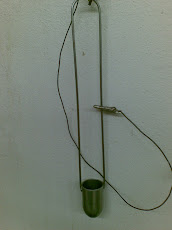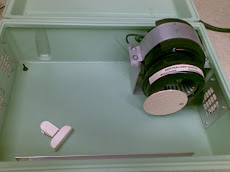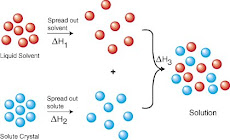Investigation Into Marine Concrete Anti-Fouling Coatings
Long term ecologically sound answer to organic growth remains unsolved, however the use of titanium dioxide (TiO2) particles within coatings for concrete pavements have received considerable attention in recent years.
By Peter Hughes, Contributing Writer
Photocatalytic coatings are successfully used with many other building materials and have been shown to retard algal growth on concrete (2). In spite of these promising benefits, applications of this technology are currently limited. The durability of this technology in a marine application needs to be established before large-scale practical implementation is undertaken. Titanium dioxide (TiO2) is a white inorganic substance that is thermally stable, non-flammable and insoluble. TiO2, the oxide of the metal titanium, which is the ninth most abundant element in the earth’s crust, occurs in many rocks and mineral sands, the most economically important being ilmenite and rutile deposits. Ultra-fine (nano-scale) titanium dioxide (Anatase) was used in this research for surface treatments. The potential of titanium dioxide as a photocatalyst was discovered by (3). This process, which is similar to plant photosynthesis, allows the decomposition of water into oxygen and hydrogen in the presence of light, by means of a TiO2-anode (1). Based on this heterogeneous photocatalytic oxidation process, nitrogen oxides are oxidized into water-soluble nitrates while sulfur dioxide is oxidized into water-soluble sulfates; these substances can be washed away by moisture in the form of rainfall or seawater. The overall aim of this research, is to advance the understanding of how a photocatalytic (TiO2) coatings responds in a marine environment. This phase of work, carried out in the northwest of England, has recorded anti-fouling performance and intends to progress towards a non-toxic, environmentally-benign strategy for future industrial applications.
The ‘Development’ Tio2 Coating Used In This Research
Primary particles of ultrafine TiO2 within the development coating used was typically in the range of size from 10 to 60 nm, not only as existing discreet primary particles but as aggregates, with secondary particle sizes typically >100 nm. The coating was a stable aqueous dispersion (sol) of ultrafine TiO2 particles. Key features included an anatase crystal form with a 10 wt% of TiO2 content. The coating had a neutral pH of 8.5, with a high surface area (dry) of 300 m²/g, it dried clear, and was UV light activated with limited fluorescent light activity. It is marketed for architectural applications.
Tio2 Coating Application In This Study
The coating procedure consisted of three independently applied layers brushed (concrete tiles) or roller applied (static site) onto the surface of concrete specimens, as per the manufacturer’s recommendation. The primer layer was applied to lower the viscosity of the material. This assisted in generating a good seal in the priming process through the filling of cracks and blowholes in the concrete surface. The primer formed a coating layer with a dry film thickness of 10µm. On top of the dried primer, an undercoat was applied after a drying time of 24h. Then, three separate topcoats were applied, each 10µm and a further 24h drying time, thus, bringing the overall thickness of the photocatalytic coating to 50µm. Although the coating was composed of a number of different layers, the comparatively short time between applications ensured that the finished complete layer did not show any distinct separate layers, but can be treated for all intents and purposes in this research as a single layer, see figure 1.
Results And Discussion
The biological complexity of the phenomenon, part of a larger study (4), referred to as marine biofouling, is enormous. It has been shown here and in previous research (5) that it is an ecological community with entities originating from all that we call life. Also, each organism has its own solution for how to find and attach on a surface, evolved during millions of years. It is the author’s view, it is impossible to invent new antifouling coatings without restricting the problem, meaning that several antifouling strategies have to be part of a holistic approach, leading to a bigger solution.
There are however several obstacles to be cleared before titanium dioxide photocatalyst technology can be adopted in the control of marine biofouling. Not only the fact that the applicability of this technology is limited considerably because the catalyst works only where there is light, but the application of a coating to composite materials such as concrete has limitations, as shown in figure 2.
The performance of the coating was observed to be heavily dependent on the underlying composite material. First of all, due to differences in intrinsic properties the synthetic fibres, in abundance at the surface of the concrete samples, inhibited a satisfactory bond between coating and substrate. The thermal coefficients of the coating were different from that of the concrete and its constituents. Thermal expansion and movement, referred to as ‘fibre pop out’, of exposed fibres instigated a cracking of the coating, as seen in figure 3, resulting in not only reduced photocatalytic activity but also structure and strength destructions.
Furthermore, the attachment of filamentous algae to the surface of the coating, seen in figure 4, was also observed to be detrimental to its long term durability. Diatoms, illustrated in figure 5, form another component of marine biofilms and act a settlement mediator for larger fouling. The diatom attachment to coatings examined showed that this single algae cell accelerated coating degradation.
Filamentous bacterial growth from within the matrix of the new concrete, as observed in figure 6, also played its part in the eventual cracking and delamination of the coating from its foundation. This previously unreported phenomena is discussed in more detail elsewhere (6). Coatings for marine concrete structures are subject to harsh environments, dynamic loads, continuous expansion and contraction by heat, rain/seawater splash, impacts from debris, erosion, micro-organisms etc. In this condition, most coatings deteriorate in a short period of time in the form of cracking, blistering, disbanding or chalking. The application of the TiO2 based coating tested in this research was not designed to defend from microbial growth from ‘within’ the concrete, effectively a living substratum, observed in figure 7. The occurrence of a bacterial biofilm formation under the coating has significantly effected the performance of the coating. A study into the addition of TiO2 powder with an average size 21 nm (30% rutile and 70% anatase) into a bacterial colony, showed that 60–120 min were sufficient to destroy all the bacteria (7). Other workers also confirm that using lower dimension TiO2 particles leads to a faster bacterial destruction (8). These new observations of bacterial growth seen in figure 6 are detrimental to the long term durability of the coating and requires further investigation. This newly observed degradation mechanism, see figure 8, reported here, of a coating has implications for not only the construction sector.
Conclusions
Based on the analysis conducted, the following conclusions may be drawn that macro and micro synthetic fibres at the surface of concrete inhibit a strong and durable bond between the coating and the substratum, accelerating cracking and the eventual breakdown of the coating. Algal filamentous growth including diatoms attached to the surface of the coatings, applies further pressure on the integrity of the coating. Bacterial filamentous growth from within the matrix of the concrete, grows at the coating/concrete interface. This growth disrupts the bond between coating and substratum, leading to the de-lamination of the coating. Based on the results presented, further research is recommended to consider factors such as microbial growth under a coating, application methods and variation, coating composition, and long term durability. Furthermore, research in this field, needs to be developed to determine if any coatings have the potential to be effective in the long term strategy against marine biofouling.
Peter Hughes is a final year PhD student at the University of Central Lancashire, UK, investigating marine biofouling and its implications for the durability of marine concrete.
Acknowledgement
The author thanks his supervisors for their guidance. D. Fairhurst, Professor I. Sherrington, Dr. N. Renevier, Professor L.H.G. Morton, Professor P. C. Robery and Dr. L. Cunningham.
Further discussions are invited at: PHughes1@uclan.ac.uk
References
1. Fujishima, A., Rao, T., Tryk, D. Titanium dioxide photocatalysis. Journal of Photochemistry and Photobiology. 1, 2000, 1-21.
2. Peller, JR, Whitman, RL, Griffith, S, Harris, P, Peller, C, Scalziatti, J. TiO2 as a photocatalyst for control of the aquatic invasive alga, Cladophora, under natural and artificial light. Photoch. Photobio. A. 186, 2007, 212-217.
3. Fujishima, A., Honda, K. Electrochemical photolysis of water at a semiconductor electrode. Nature. 238, 1972, 8-37.
4. Hughes, P., Fairhurst, D., Sherrington, I., Renevier, N., Morton., L.H.G., Robbery, P., Cunningham, L. Microscopic examination of a new mechanism for accelerated degradation of synthetic fibre reinforced marine concrete. Construction and Building Materials. 41, 2013, 498-504.
5. Hughes, P. A new mechanism for accelerated degradation of synthetic-fibre-reinforced marine concrete. Concrete. 9, 2012, Vol. 46, 18-20.
6. Hughes, P. A study into the microbial growth within new marine concrete. Concrete. 1, 2013, Vol. 47, 34-36.
7. Saito, T, Iwase J, Horic J, Morioka T. Mode of photocatalytic bactericidal action of powdered semiconductor TiO2 on mutans streptococci. Journal of Photochem Photobio B Bio. 14, 1992, 369-379.
8. Huang, Z, Maness P, Blakem D, Wolfrum E, Smolinski S, Jacoby W. Bactericidal mode of titanium dioxide photocatalysis. J Photochem Photobio A Chem. 130, 2000, 163-170.










































